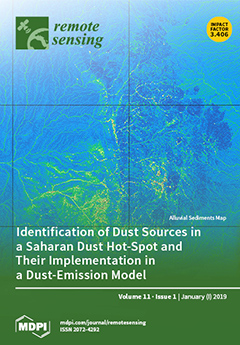Remote Sensing Open Access Journal (RS OAJ) is an international leading journal in the field of remote sensing science and technology. It was first published in the year 2009 and is currently celebrating tenth year of publications. In this research, a bibliometric analysis of RS OAJ was conducted based on 5588 articles published during the 10-year (2009–2018) time-period. The bibliometric analysis includes a comprehensive set of indicators such as dynamics and trends of publications, journal impact factor, total cites, eigenfactor score, normalized eigenfactor, CiteScore, h-index, h-classic publications, most productive countries (or territories) and institutions, co-authorship collaboration about countries (territories), research themes, citation impact of co-occurrences keywords, intellectual structure, and knowledge commutation. We found that publications of RS OAJ presented an exponential growth in the past ten years. From 2010 to 2017 (for which complete years data were available), the h-index of RS OAJ is 67. From 2009–2018, RS OAJ includes publications from 129 countries (or territories) and 3826 institutions. The leading nations contributing articles, based on 2009–2018 data, and listed based on ranking were: China, United States, Germany, Italy, France, Spain, Canada, England, Australia, Netherlands, Japan, Switzerland and Austria. The leading institutions, also for the same period and listed based on ranking were: Chinese Academy of Sciences, Wuhan University, University of Chinese Academy of Sciences, Beijing Normal University, The university of Maryland, National Aeronautics and Space Administration, National Oceanic and Atmospheric Administration, China University of Geosciences, United States Geological Survey, German Aerospace Centre, University of Twente, and California Institute of Technology. For the year 2017, RS OAJ had an impressive journal impact factor of 3.4060, a CiteScore of 4.03, eigenfactor score of 0.0342, and normalized eigenfactor score of 3.99. In addition, based on 2009–2018, data co-word analysis determined that “remote sensing”, “MODIS”, “Landsat”, “LiDAR” and “NDVI” are the high-frequency of author keywords co-occurrence in RS OAJ. The main themes of RS OAJ are multi-spectral and hyperspectral remote sensing, LiDAR scanning and forestry remote sensing monitoring, MODIS and LAI data applications, Remote sensing applications and Synthetic Aperture Radar (SAR). Through author keywords citation impact analysis, we find the most influential keyword is Unmanned Aerial Vehicle (UAV), followed, forestry, Normalized Difference Vegetation Index (NDVI), terrestrial laser scanning, airborne laser scanning, forestry inventory, urban heat island, monitoring, agriculture, and laser scanning. By analyzing the intellectual structure of RS OAJ, we identify the main reference publications and find that the themes are about Random Forests, MODIS vegetation indices and image analysis, etc. RS OAJ ranks first in cited journals and third in citing, this indicates that RS OAJ has the internal knowledge flow. Our results will bring more benefits to scholars, researchers and graduate students, who hopes to get a quick overview of the RS OAJ. And this article will also be the starting point for communication between scholars and practitioners. Finally, this paper proposed a nuanced h-index (nh-index) to measure productivity and intellectual contribution of authors by considering h-index based on whether the one is first, second, third, or nth author. This nuanced approach to determining h-index of authors is powerful indicator of an academician’s productivity and intellectual contribution.
Full article





